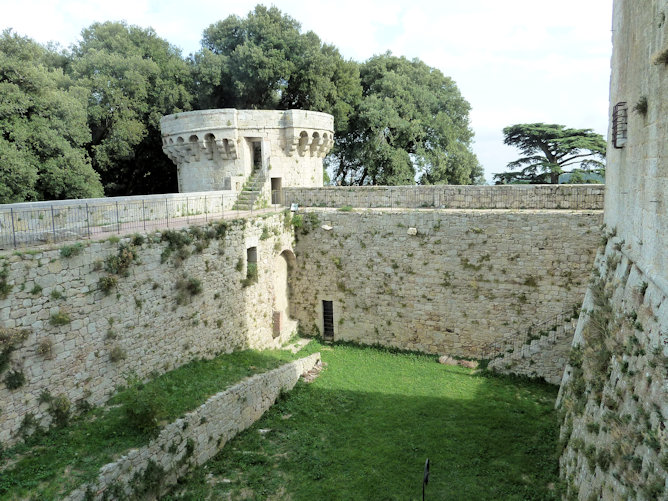

- Today's castle is made up of 4 floors, with 4 rooms on each floor. There is an open terrace on the
top floor, which originally had battlements.
- Le château d'aujourd'hui compte 4 étages, avec 4 salles à chaque étage. Il y a une terrasse ouverte
à l'étage supérieur, laquelle à l'origine avait un mur à créneaux.
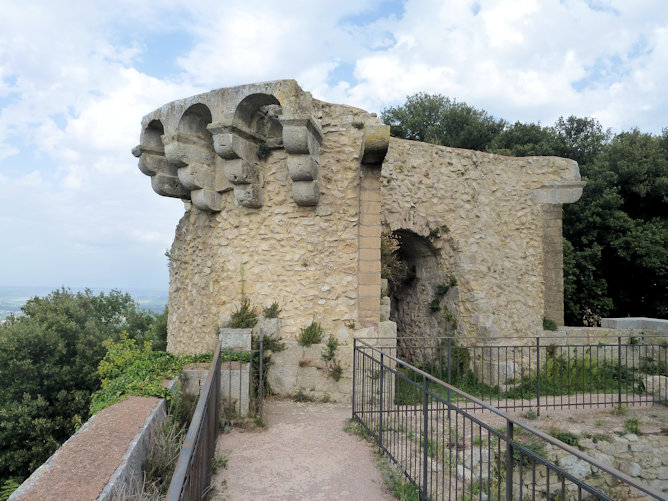

- The castle is built on the Cetona mountain and towers above Sarteano from a height of 1,880 feet
above sea level
- Le château est construit sur le mont Cetona et surplombe Sarteano d'une hauteur de 573 mètres
au-dessus niveau de la mer
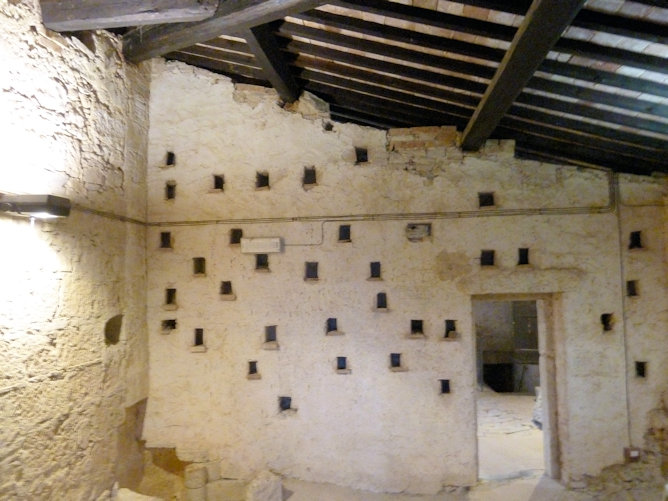

- A room on the fourth floor was used as a dovecote
- Une salle au quatrième plancher servait de pigeonnier
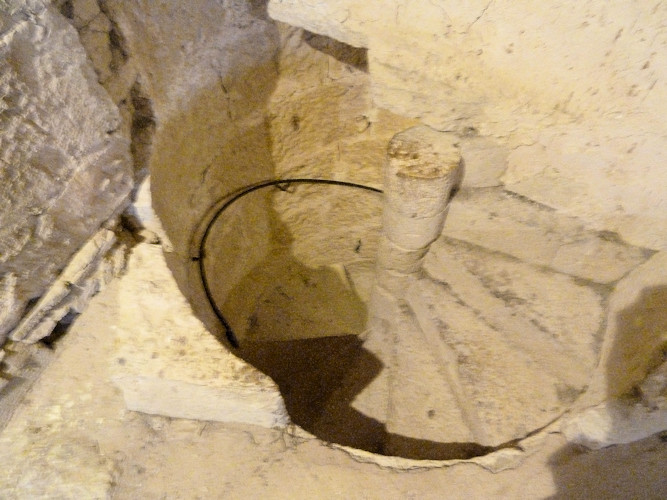

- The secret spiral staircase that connects all the floors of the castle was used, in case of siege, to
escape using a tunnel that led outside the castle
- L'escalier secret en colimaçon qui relie tous les étages du château était utilisé, en cas de siège,
pour s'échapper en utilisant un tunnel qui menait à l'extérieur du château
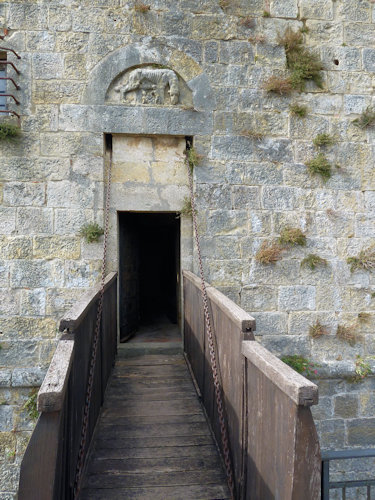

- A drawbridge giving access to the walls
- Un pont-levis donnant accès aux murs

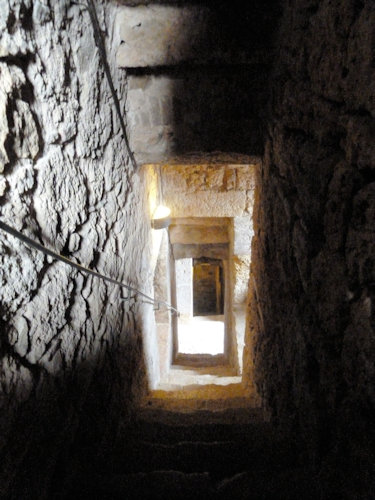

- A small staircase within the castle
- Un petit escalier dans le château

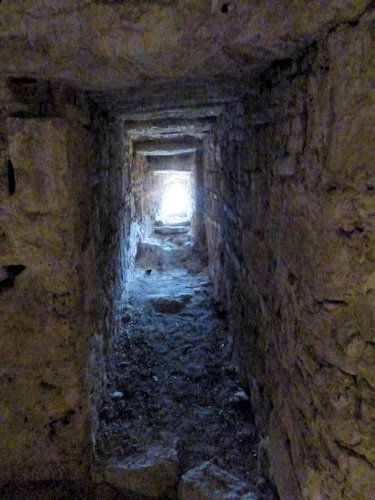

- Here we can see the thickness of the wall
- Ici, on peut voir l'épaisseur de la muraille


- A view of the new Sarteano as seen from the castle. The arrow shows the approximate
location of our apartment
- Une vue du nouveau Sarteano vu depuis le château. La flèche indique l'emplacement
approximatif de notre appartement
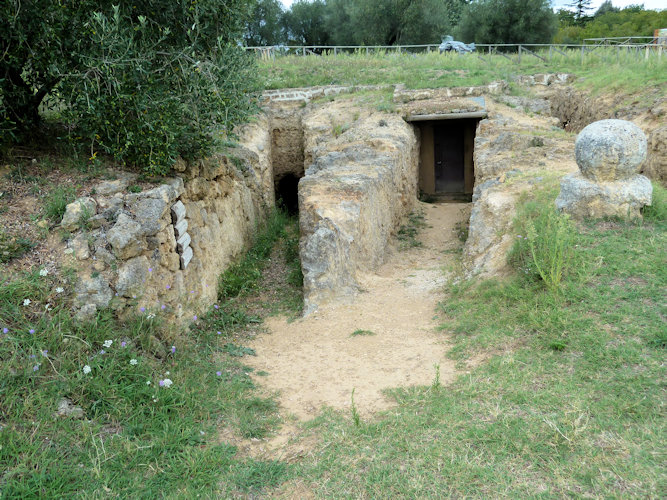

- Some of the most important Etruscan tombs in Tuscany are located in Sarteano. Here are two
entrance passages to chamber tombs in the Pianacce necropolis.
- Certaines des tombes étrusques les plus importantes de la Toscane sont situés à Sarteano. Voici
deux couloirs d'entrée à des chambres funéraires de la nécropole Pianacce.
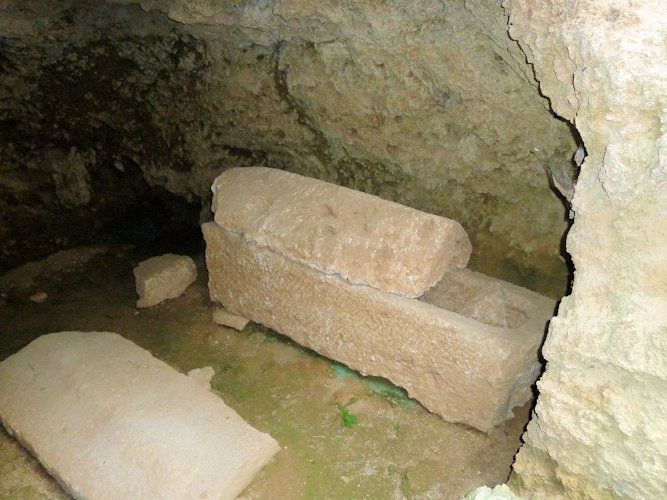

- A small tomb at the Pianacce necropolis, which dates back from the 6th to the 5th centuries BC
- Une petite tombe à la nécropole Pianacce, qui remonte du 6e au 5e siècle avant J.-C.
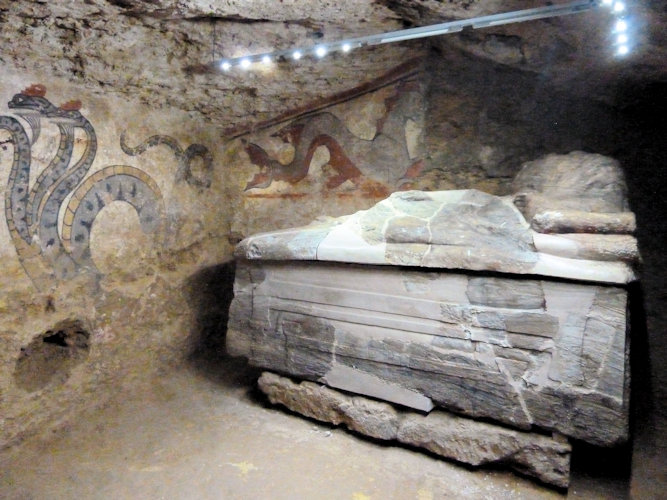

- A colossal sarcophagus in grey alabaster recovered in la Tomba della Quadriga Infernale
(the Tomb of the Infernal Chariot), which was discovered in October 2003
- Un très grand sarcophage en albâtre gris retrouvé dans la Tomba della Quadriga Infernale
(la Tombe du Quadrige Infernal), laquelle a été découverte en octobre 2003
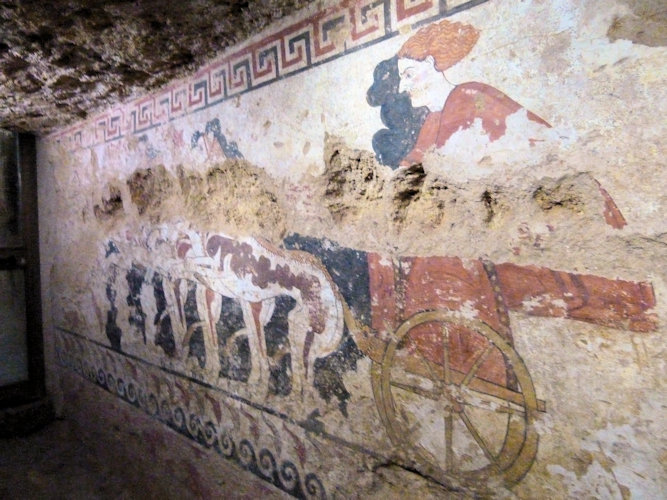

- There are 4th century BC original paintings in la Tomba della Quadriga Infernale with colors amazingly
well preserved. Here a two-wheeled chariot drawn by 2 lions and 2 griffons and probably driven by the
Etruscan demon Charon who was accompanying the souls of the deceased on their journey towards Hades.
- Il ya des peintures originales du 4e siècle avant J.-C. dans la Tomba della Quadriga Infernale avec des couleurs
étonnamment bien conservées. Voici un quadrige à deux roues tiré par 2 lions et 2 griffons et probablement
conduit par le démon étrusque Charon qui accompagnait les âmes des défunts dans leur voyage vers Hadès.
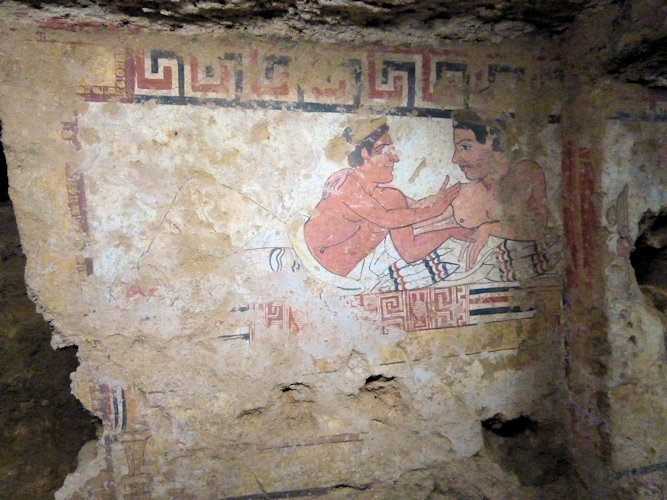

- A painting of two male figures, reclined on a couch at the eternal afterlife banquet while making
an exceptional gesture of affection to each other, are probably father and son with a different skin
color to indicate the difference in age
- Une peinture représentant deux défunts allongés sur le lit du banquet éternel échangeant un très
beau geste d'affection. Il s'agit probablement du père et du fils; leur différente couleur de peau
nous indique leur différence d'âge.